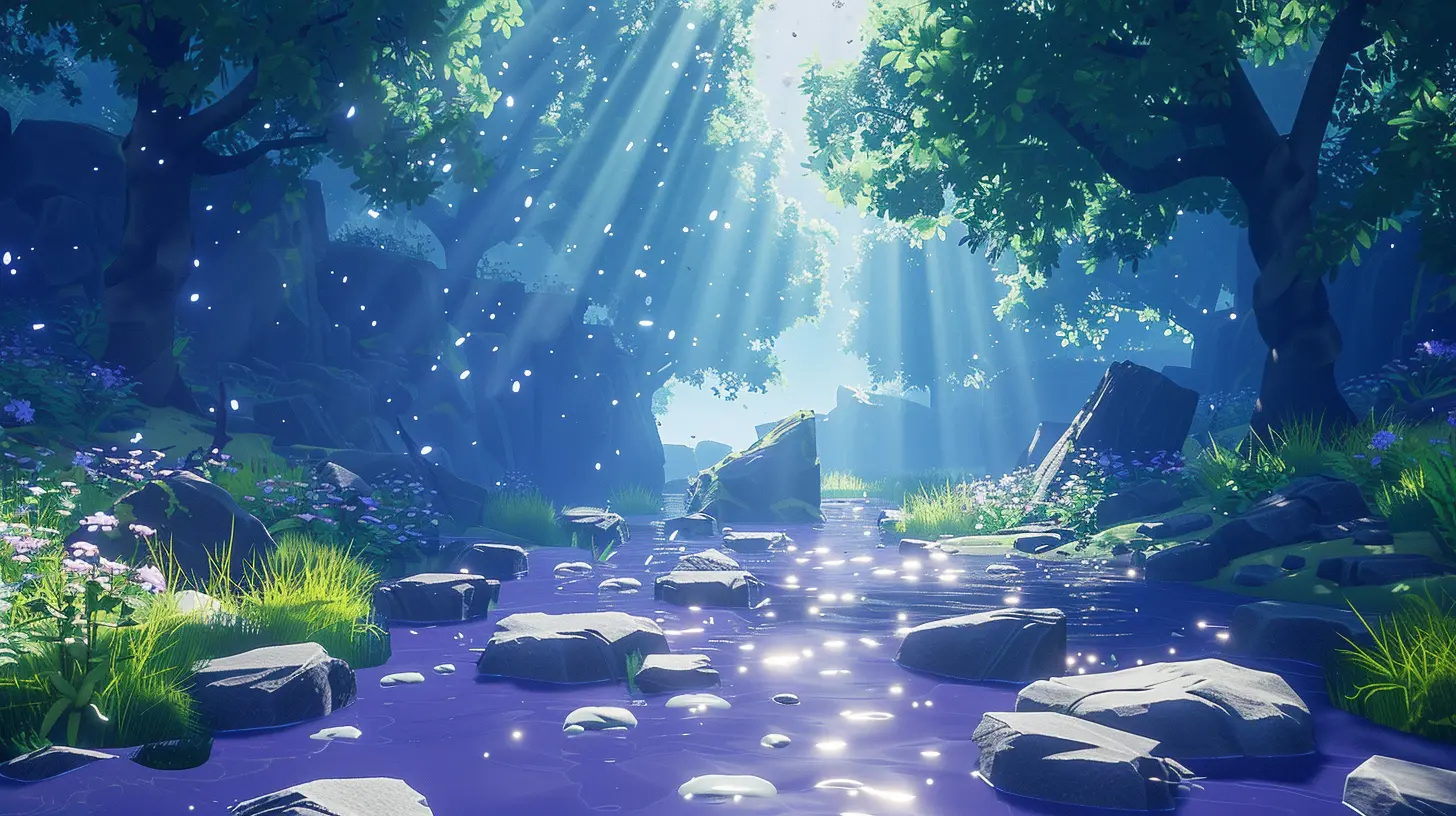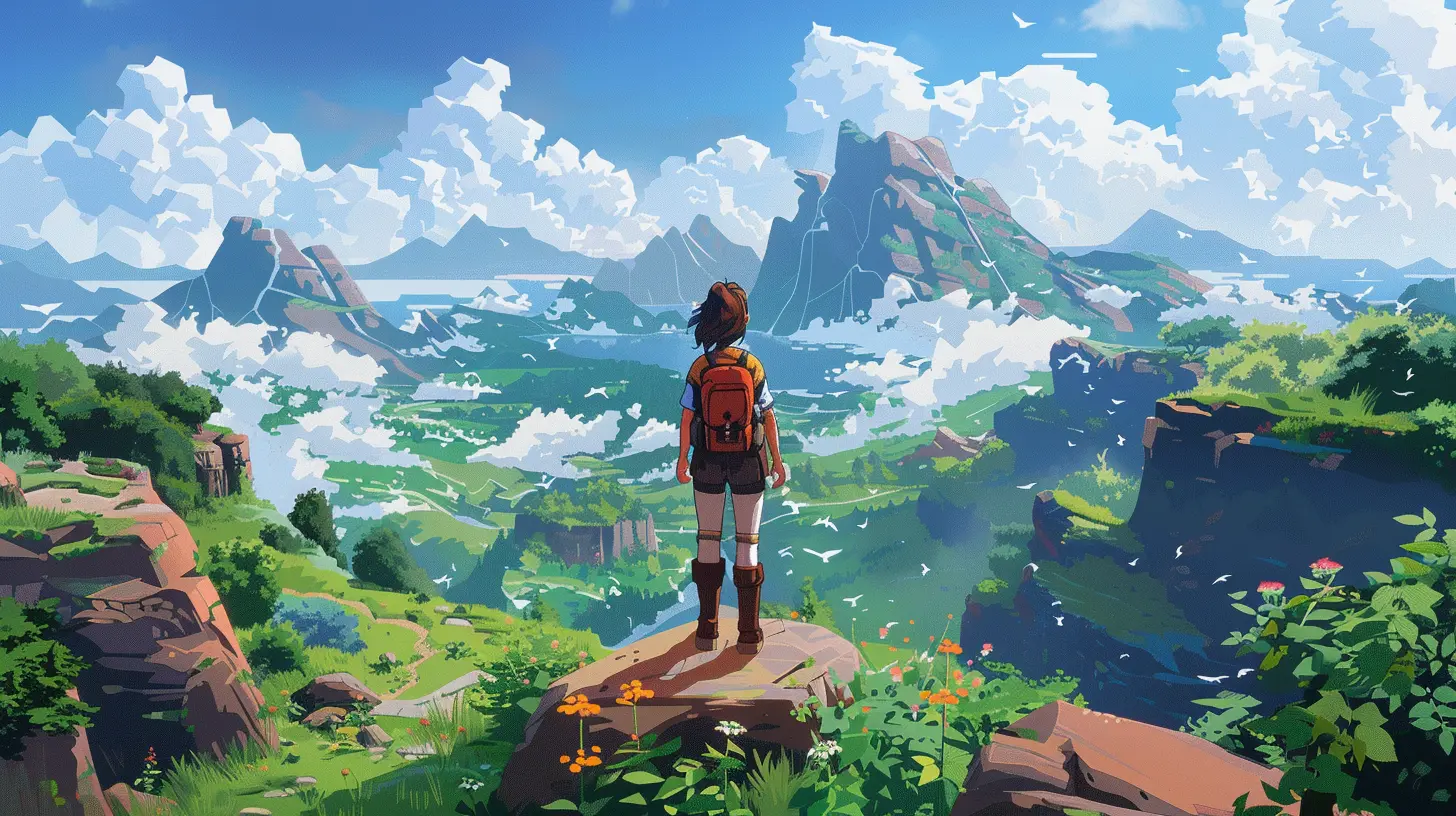Crafting Immersive Worlds: What Indie Games Get Right
10 September 2025
When was the last time a game truly sucked you in? You know, not just for the graphics or the mechanics, but for the way its world felt alive—like you could almost smell the grass under your character's feet or feel the wind blow past them? While AAA titles often get the spotlight for their Hollywood-level graphics and massive open worlds, indie games quietly excel at crafting immersive worlds. They may not always have billion-dollar budgets, but what they lack in resources, they make up for in creativity, passion, and heart.
Let’s dive into exactly what indie developers get so right when creating these rich, detailed virtual worlds that stick with us long after we’ve put the controller down.

1. Freedom to Take Risks
In the indie gaming scene, developers have something many large studios don’t: freedom. Without the pressure to cater to a wide audience or hit specific sales targets, indie creators get to focus on experimenting. They play by their own rules, and that’s where the magic happens.Think about games like Hollow Knight or Outer Wilds. These titles don’t fit neatly into standard gaming molds. They take risks with their storytelling, gameplay mechanics, and even art styles. Sometimes, these risks create worlds that feel refreshingly original and deeply engaging. It’s not about ticking boxes or following trends—it’s about creating something uniquely theirs.
This approach is akin to indie films pushing the boundaries of cinematography. It’s unfiltered creativity at its purest. And guess who benefits? Yep, us players.
2. Storytelling That Feels Personal
Indie games excel at storytelling. Why? Because they’re often labors of love. Developers pour their personal experiences, dreams, and even struggles into the stories they tell. It’s like sitting across a coffee table from someone sharing a deeply personal story—they're not just giving you entertainment; they’re letting you peek into their soul.Take Celeste, for example. On the surface, it’s a challenging platformer, but it also tells a heartfelt story about mental health and overcoming self-doubt. You’re not just playing a game; you’re along for an emotional ride. That intimacy, that raw honesty, hits differently than a cookie-cutter plot churned out by corporate focus groups.
When the story resonates on a personal level, it pulls players deeper into the world. You’re not just controlling a character—you’re feeling alongside them.
3. Worldbuilding Through Attention to Detail
Indie developers prove time and again that it’s not about the size of your world; it’s how you build it. They know how to make every pixel, every line of dialogue, and every sound effect count.Let’s talk about Stardew Valley. That game doesn’t have sprawling cities or endless dungeons, yet somehow, its small-town setting feels incredibly alive. Why? Because of the little things: how villagers have daily routines, how the seasons change the atmosphere, or even how the fields look different at dusk compared to dawn.
These details make the game world feel like a living, breathing place. The more alive a world feels, the more immersive it becomes. You’re not just playing; you’re existing in that space.
Indies also nail environmental storytelling—subtle details in the surroundings that hint at lore, history, or character backstories. Think about the haunting, abandoned ruins in Hollow Knight or the peculiar, cryptic messages in Limbo. Without saying a word, these worlds tell you so much.
4. Art Styles That Stand Out
If there’s one area where indie games truly shine, it’s their art direction. They don’t need hyper-realistic graphics because they lean into styles that feel iconic and unique. Whether it’s the hand-drawn charm of Cuphead or the retro pixel art of Undertale, indie games prove that art is about creativity, not polygons.These unique visuals are instantly recognizable. They stick in your memory, like how you can still picture the surreal, minimalist landscapes of Journey years after playing it. A distinct art style can make a world feel like it’s pulled straight out of a storybook or a dream. It draws you in, makes you curious, and keeps you coming back.
5. Music That Completes the Experience
What would an immersive world be without an unforgettable soundtrack? Indie games often understand the importance of music better than their AAA counterparts. The right melody at the right moment can transform a simple scene into an emotional or exhilarating experience.Take Celeste again—its soundtrack perfectly mirrors the emotional highs and lows of the story. Or how about Hyper Light Drifter, where the ambient music pulls you deeper into its mysterious, melancholic world? These soundtracks aren’t just background noise; they’re part of the lifeblood of the game.
Music in indie games is like the seasoning in a dish—it might not be the star ingredient, but if you get it right, it elevates everything else.
6. Communities Built Around Passion
Let’s not forget the unique relationship between indie developers and their fans. When you play an indie game, chances are you’re playing something created by a small, tight-knit team—or even one person. The close connection between the developers and their audience often leads to a strong, dedicated community.Fans of indie games are vocal, passionate, and invested. This feedback loop helps developers fine-tune their worlds even after release. It also means players feel like they’re part of something special, something bigger than just a game. That sense of belonging makes the experience even richer.
7. Limitations Spark Creativity
Here’s a funny thing: having limited resources can actually make some developers more creative. Indie teams don’t have the budget for massive open worlds or groundbreaking tech, so they double down on innovation in other areas. They find clever ways to work within their constraints, often resulting in magical experiences you’d never expect.Take Papers, Please. It’s just a simple desk job simulator, right? Wrong. With minimalist graphics and repetitive mechanics, it still manages to create a tense, morally complex world where every decision feels impactful. That’s creativity born from necessity.
8. A Focus on Player Connection
Finally, indie games often succeed because they prioritize the emotional connection between the player and the game. They’re not just focused on ticking boxes or padding the playtime. Instead, they’re laser-focused on making sure you feel something. This emotional depth keeps players engaged and invested.Whether it’s the nostalgia of farming in Stardew Valley or the adrenaline rush of surviving in Don’t Starve, these games connect with players on a deeper level than many big-budget titles ever do.
Final Thoughts
Indie games prove that you don’t need a massive budget or cutting-edge tech to create a world that players will love. What they lack in resources, they make up for with passion, creativity, and a deep respect for the art of storytelling. They remind us why we fell in love with gaming in the first place—not for the realistic graphics or massive explosions, but for the feeling of stepping into someone else’s shoes and exploring a world that’s alive with possibility.So next time you’re considering what game to play, give an indie title a try. You might just find yourself lost in a world more immersive than anything a AAA studio could offer.
all images in this post were generated using AI tools
Category:
Indie GamesAuthor:

Luke Baker
Discussion
rate this article
1 comments
Sheena Ramirez
This article brilliantly highlights how indie games excel in world-building through innovation and creativity. Their ability to prioritize player experience, intricate storytelling, and unique visual styles fosters deep emotional connections. It's inspiring to see such passion and craftsmanship, reminding us that great games don't always come from big studios.
September 10, 2025 at 3:02 PM

Luke Baker
Thank you for your thoughtful comment! I’m glad you resonated with the article’s emphasis on creativity and emotional depth in indie games. Their passion truly sets them apart!


